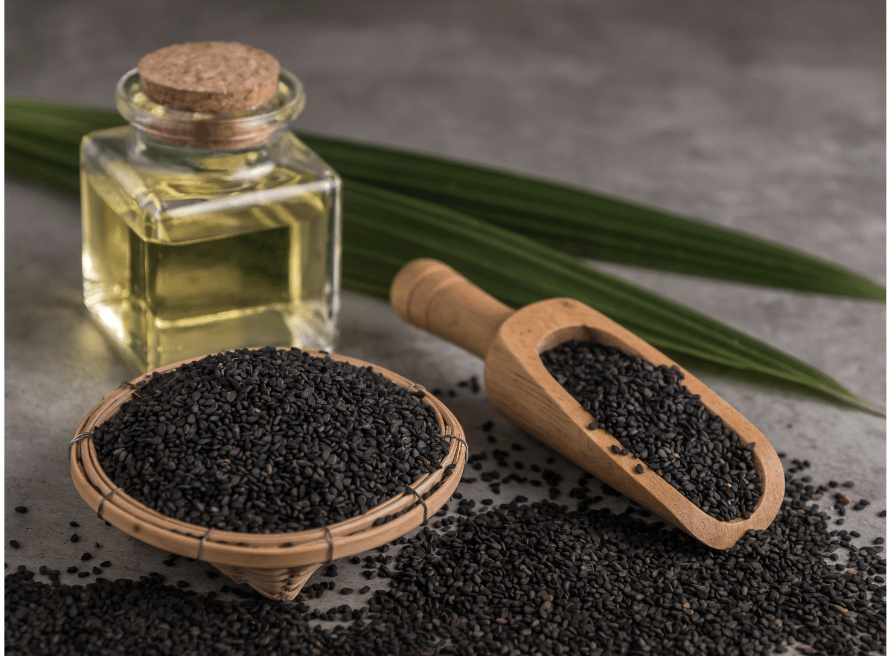Singa (Black Seed) – The Biweekly Boost for Skin Vitality
Siri za Urembo wa Asili na Mariam
ANCIENT BEAUTY SECRETS
4/3/20254 min read


A Traditional Skincare Treasure
Singa, or black seed (Nigella sativa), has been a cherished ingredient in traditional skincare routines across many cultures. Used every two weeks as part of a regular beauty regimen, black seed oil is celebrated for its remarkable healing properties, anti-inflammatory benefits, and antimicrobial effects.
This biweekly application rhythm is key to its effectiveness—frequent enough to maintain benefits, but spaced appropriately to prevent overwhelming the skin with its potent properties.
Benefits for Skin Health
Black seed oil offers multiple benefits that make it valuable for various skin types and concerns:
Anti-Inflammatory Properties: Helps reduce redness and soothe irritated skin, making it beneficial for conditions like eczema and psoriasis.
Antimicrobial Benefits: Fights bacteria that can contribute to acne and other skin infections, supporting clearer, healthier skin.
Balancing Effects: Aids in managing oil production while providing nourishment, helping to maintain skin's natural equilibrium.
Antioxidant Protection: Contains compounds that help neutralize free radicals, potentially reducing signs of aging and environmental damage.
Moisturizing Without Heaviness: Provides hydration without clogging pores, suitable for most skin types when used correctly.
Scientific Insights
Black seed oil has been the subject of various scientific studies investigating its therapeutic properties. Research published in the Journal of Ethnopharmacology has identified thymoquinone as the primary active compound in black seed oil, responsible for many of its benefits.
This compound demonstrates significant anti-inflammatory and antimicrobial properties in laboratory studies. Research suggests it can reduce inflammatory markers and inhibit certain bacteria, supporting the traditional understanding of black seed's healing capabilities.
Additional studies have shown that black seed oil contains essential fatty acids, vitamins, and minerals that support overall skin health and function. Its complex composition explains why it has been valued across generations for both medicinal and cosmetic applications.
How to Use Singa in Your Skincare Routine
The traditional application of black seed oil follows specific guidelines for maximum effectiveness:
Proper Dilution: Use a tiny drop (or two) of black seed oil—a little goes a long way. Pure black seed oil can be potent, so dilution is recommended for facial application.
Create a Balanced Serum: Mix with other nourishing carrier oils to create a more balanced treatment. Good options include jojoba, sweet almond, or argan oil.
Biweekly Application: Apply the blend every two weeks as part of your skincare ritual. This timing allows the skin to receive benefits without overwhelming it.
Evening Application: Apply in the evening, when skin is in its natural repair mode, for maximum absorption and benefit.
Gentle Application: Press the oil gently onto cleansed skin rather than rubbing, allowing it to absorb naturally.
Recipe: Traditional Black Seed Facial Serum
This balanced serum makes black seed oil suitable for regular use:
Ingredients:
2 drops of black seed oil
5 drops of jojoba oil (or another carrier oil of choice)
3 drops of rosehip oil (for added regenerative benefits)
1 drop of frankincense essential oil (optional, for special occasions)
Preparation:
Combine all oils in a small, dark glass bottle.
Gently roll the bottle between your hands to blend (avoid vigorous shaking).
Apply 3-4 drops of this mixture to your face every two weeks.
Store in a cool, dark place between uses.
Adaptations for Different Skin Types
Black seed oil can be customized for various skin needs:
For Sensitive or Reactive Skin: Mix one drop with three drops of aloe vera gel instead of other oils for a gentler approach.
For Mature Skin: Combine with rosehip oil, which complements black seed's rejuvenating properties and adds vitamin A benefits.
For Oily or Acne-Prone Skin: Use with a drop of tea tree oil, which works in harmony with black seed's antimicrobial benefits.
For Extremely Dry or Damaged Skin: Blend with a drop of deeply nourishing marula or baobab oil for enhanced hydration.
Proper Storage and Preservation
To maintain the potency of black seed oil:
Use Dark Glass Containers: Black seed oil is sensitive to light, which can diminish its healing properties.
Keep Tightly Sealed: Oxygen exposure can cause oxidation and reduce efficacy.
Store in Cool Locations: Keep away from heat sources; a cool cabinet is ideal for storage.
Check for Freshness: Quality black seed oil should have a strong, distinctive aroma. If it smells rancid or has no scent, it has likely expired.
Choose Quality Sources: Look for cold-pressed, unrefined black seed oil for maximum therapeutic benefits.
Tips & Considerations
When incorporating black seed oil into your skincare routine:
Consistency is Key: Use every two weeks for the best results, as traditional practices recommend.
Patch Test First: Always perform a patch test before full application to ensure your skin tolerates it well.
Less is More: Remember that black seed oil is potent—using more won't accelerate results and may cause irritation.
Complementary Ingredients: Black seed oil works well alongside honey, aloe vera, and other natural ingredients for enhanced benefits.
Avoiding Oxidation: Only open your bottle when needed, and close tightly immediately after use to preserve potency.
A Timeless Remedy for Modern Skin Concerns
While many skincare trends come and go, black seed oil stands as a testament to traditional wisdom that has withstood the test of time. Its balanced approach to skin healing—addressing inflammation, bacteria, and moisture balance simultaneously—explains why it remains relevant for contemporary skin concerns.
By following the traditional biweekly application schedule and proper dilution techniques, modern users can experience the same benefits that have made Singa a valued skincare ingredient across generations and cultures.
This article is based on traditional knowledge and supported by modern scientific research on black seed oil and its applications in skincare.
Join the Maris Community
© 2025 Maris Speak Up. All rights reserved.
Your privacy is important to me. Rest assured, your email will never be shared or sold.
Info@marissustainableskincare.com
Our official email
Join our community of early supporters and get exclusive benefits when we launch our skincare brand. As a founding insider, you’ll be the first to hear about product updates, enjoy early access, and receive special rewards made just for our day-one members. Plus, you'll get skincare tips and behind-the-scenes content as we build something meaningful together.
